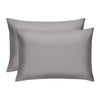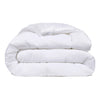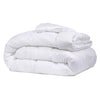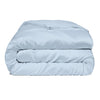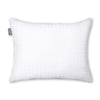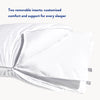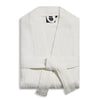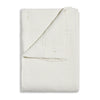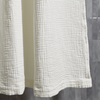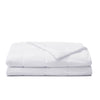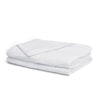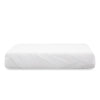The Daily Miracle
Can Silver Kill Bacteria?
Published
August 04, 2020
Author
Nicholas Crusie

Over time there have been claims that silver is antibacterial or antimicrobial.
This sounds almost too good to be true that a metal substance like silver ions kill bacteria and prevent bacterial infections, like those from e.coli bacteria. But, thankfully, there is actual science to back up these claims, and it is amazing what silver can do and all of the many ways that it can be utilized in everyday life!
So, not only can silver ions make beautiful jewelry and mirrors, it can be utilized in other ways as well. Before understanding exactly how silver has antimicrobial activity, you need to know where silver comes from, its scientific and elemental properties, and of course, where exactly naturally antibacterial silver is being used, specifically in the textile and clothing industry.
Where Does Natural Silver Come From?
Natural or native silver is found in the crust of the earth. The first time its use was documented was back in 3000 BC by the Turkish and Greecian people. In the beginning, it was commonly used with wound dressings in the forms of colloidal silver and silver nitrate. Important note: silver should not be ingested by itself or in drinking-water as it can lead to argyria, which can result it silver-colored skin that can make you look like a zombie. It sounds cool, but trust us, it's not.
The Central American people of ancient civilizations mined and used silver as well. It is usually found in areas that have many mines. The world's greatest silver producers are Mexico, Peru, and China. South and Central America are very popular places to mine silver, as well, along with areas in Asia and Europe. Once the ores are mined, they are melted down and refined, to then be shaped into exactly what is needed for the product.
Miracle’s natural silver fibers are actually made in North Carolina, USA, and then shipped to India to be incorporated into the other fibers of the textile with this new knowledge. Silver is a long-standing material that has proven useful and beneficial to many for centuries.
Natural Silver’s Properties
Natural silver overall has many properties, with the antimicrobial effects of silver as only one of them. But, that is not the only property that matters when it comes to creating bedding and towels with silver infused fibers. One of the key principles of silver is that it is a soft and malleable metal. As a jewelry piece, this softness may not be ideal because it is prone to scratches and dents, but for use in fabric, it is perfect! Because it is so malleable, it is able to be rolled and stretched into fine threads.
Another one of silver's most notable properties is how high it is on the reflective index. Its high reflectability is why it looks so shiny in and is even one of the main products used to make mirrors. Some mirrors are actually glass with silver solution poured or sprayed on top to create a reflective surface. These reflections are what can add a nice sheen and luster to fabrics with silver in them as well. Have you ever noticed that silver infused sheets or clothes have a shine? Well, now you know why!
Another key characteristic of metal is that it is cool to the touch. This plays a role in the cooling sensation you feel when the fabric floats across your skin. And of course, silver is an amazing antimicrobial agent that makes it perfect for fabrics that are used for long periods of time or are used for activities that harbor bacteria. Overall, silver's amazing properties make it a perfect fit for the textiles industry while also boost your self-health care. Who would have known?
How Does Silver Kill Bacteria?
Silver has a track record for being an antibacterial agent, but how exactly is that accomplished? The complete mechanism for the killing of bacteria and superbugs is not completely figured out, but there are some basics that are known about the process and how it works.
The first thing is how the bacteria is attracted to the silver nanoparticles. The silver single-particles are positive ions on the molecular level that attract the bacterial cell membrane and cell wall like a magnet so that it can work its science. Once the silver is near the bacteria, it attaches to the outside of the bacteria and affects the strands of DNA or DNA strands so that they are no longer functional. The live bacteria then dies and cannot reproduce either, so bacteria count is severely diminished. This is why silver is a great way to detour bacteria, and why it can be used effectively in fabrics and textiles for antibacterial effects!
How is Antibacterial Silver Used?
Jewelry
While the antibacterial properties of silver are not the main purpose for the use of silver products in jewelry, it is an added bonus that actually is very impactful. A silver ring is the greatest example of this use. A silver ring on your hand comes in contact with everything you touch and come in contact with over the course of the day. While you may wash your hands, you may not be explicitly focusing on washing your ring, which could be harboring resistant bacteria (if it was not antibacterial), which you could then spread to others or put against your own face, which is an access point for bacteria to enter your human body. Silver's antibacterial properties can reduce the amount of bacteria found on your ring that is frequently sharing germs with everything that it touches. So, while silver may make a beautiful looking ring, it also makes a very functional and safe piece of jewelry to wear!
Athleticwear
Is there a time when you sweat more than while at the gym or working out? Probably not. Some people sweat a lot when working out, which can result in unwanted body odor. This body odor is actually not your sweat alone, but the result of bacteria breaking down your sweat into smelly compounds. The science behind it is that the bacterias are reducing down the proteins in your sweat and bodily secretions into smaller particles called volatile organic compounds (VOCs) that release an acid scent. With antibacterial silver, you are able to reduce the odor caused by your sweat and work out in peace. In addition to just the silver, activewear usually features moisture-wicking fabric so that you can wick your sweat away and reduce the odor that way as well.
Footwear
Everyone knows someone or is someone that has unusually smelly feet and shoes. This is caused by the same process as the activewear, where bacteria is turning the sweat and oil into VOCs with a smelly scent. Footwear is worn for hours at a time, and once you finally get to take them off, the last thing you want to do is deal with foot odor. This is very common in workout/ tennis shoes and non-breathable shoes like leather loafers where your feet tend to sweat more than usual. Silver has been incorporated into the soles of shoes to reduce the growth of bacteria and stench. Footwear and silver were a match made in heaven for those with stinky feet and is an innovation that is very helpful to many.
Sheets
Sheets see everything from tossing and turning nights to a deep sleep after an active day outside. Many times, sheets are not given the credit they deserve even when people spend so much time in them night after night. A survey done on Americans showed that only 44 percent of people wash their sheets once a month, and 11% percent of people only wash them 4 times a year. With taking that long in between washes, you are allowing dead skin cells, hair, dirt, debris, and bacteria to grow in your bed and take a nap with you every night. You carry dead skin cells with you everywhere you go, but do you really want to be sleeping in tons of bacteria? By using silver sheets, you can decrease the amount of times you wash them without worrying about if you have extra bacteria organisms growing in your bed with you.
Pillowcases
Our faces create lots of oil, skin cells, drool, and sweat as you sleep. And just like with sheets, pillowcases are not washed nearly as much as they are needed to be. This build-up of oils can be an open invitation for bacteria to begin feasting on your body's productions. This bacteria can lead to acne, which is unwelcome by all. The bacteria can build up in your pores and result in acne on your face and even your shoulders and back. Antibacterial silver pillowcases keep this bacteria at bay and inadvertently some of your acne, too! Pillowcases are often underappreciated and undervalued, but can make a huge difference in your skin health and overall sleep quality.
Towels
One of the best environments for bacteria to grow in is one that's warm and moist. A towel is the perfect material for bacteria to grow on because it has the three perfect ingredients: human secretions, a moist environment, and warmth from the steam and body temperature. Keeping your towel in the game for longer and not having to do more laundry than needed is definitely a plus. The antimicrobial properties of silver fibers are perfect for making your towels cleaner and preventing bacteria from growing on their favorite thing, the towel. With silver towels, you will have less bacteria, less odor, and less laundry to worry about.
While not everything is known about the mechanism by which silver kills bacteria, it has definitely been shown to be effective. Silver has come a long way from its earlier work of simply being a precious metal in jewelry and mirrors to becoming part of revolutionary technologies. Silver has many things to offer, especially in your home, to make it easier and more enjoyable to just live your life, especially in a time with COVID-19 where cleanliness isn't just about comfort, it's about safety.
 |
Did you know?Natural or native silver is found in the crust of the earth. |


